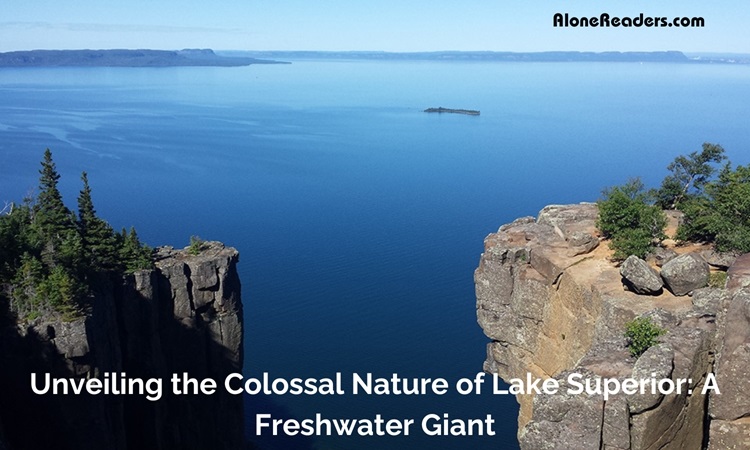
Lake Superior, often simply referred to as 'Superior', stands as a natural marvel that dominates the landscape of North America. Its name, 'Superior', fittingly denotes its grandeur and preeminent status among the Great Lakes of North America. Although commonly recognized for its sheer size, the true extent of Lake Superior's magnitude remains, for many, an aspect shrouded in wonder and awe.
Spanning an impressive area, Lake Superior is not only the largest of the Great Lakes but also holds the title of the largest freshwater lake in the world by surface area. To put this in perspective, its surface area is approximately 31,700 square miles (82,100 square kilometers). This expanse is so vast that it could easily contain the entire state of South Carolina. The lake’s dimensions are equally impressive, stretching about 350 miles (560 km) from west to east and about 160 miles (260 km) from north to south. These numbers, while striking, barely scratch the surface of understanding the true enormity of Lake Superior.
Delving deeper into its volumes, Lake Superior is estimated to contain about three quadrillion gallons of water. This staggering amount is nearly incomprehensible in its scale. To illustrate, this volume of water is enough to cover both North and South America under a foot of water. The lake's average depth is 483 feet (147 meters), with its deepest point reaching down to 1,333 feet (406 meters). This depth contributes significantly to its massive water volume, dwarfing the combined water volume of the other three Great Lakes - Huron, Erie, and Ontario.
The sheer volume of water in Lake Superior plays a critical role in the climate of the surrounding regions. It acts as a natural reservoir, moderating temperatures by absorbing heat in the summer and releasing it during the colder months. This effect creates microclimates around its shores, influencing weather patterns and ecosystem diversity.
Lake Superior's size and depth also contribute to its notorious maritime history. The lake has been the site of numerous shipwrecks over the centuries, a testament to its challenging navigation conditions. The most famous of these is the wreck of the SS Edmund Fitzgerald in 1975, which tragically resulted in the loss of all 29 crew members. The lake's cold, deep waters are known for rapidly changing weather conditions, creating treacherous waves and winds that have challenged even the most experienced sailors.
These shipwrecks have become an integral part of the lake's history and have sparked a fascination among historians and divers. The wrecks, preserved by the cold, fresh water, offer a glimpse into the past and serve as underwater time capsules. They have become important sites for study, providing insights into historical navigation, shipbuilding, and the maritime trade of past centuries.
Ecologically, Lake Superior is a bastion of biodiversity. It is home to numerous species of fish, including lake trout, whitefish, and herring, supporting both commercial and recreational fishing. The lake's surrounding landscape is a mix of forests, wetlands, and cliffs, providing habitats for a diverse range of wildlife. This ecological richness, however, is not immune to threats. Environmental concerns such as pollution, invasive species, and climate change pose significant challenges to the lake's ecosystem.
Efforts to protect and preserve Lake Superior are ongoing. These include monitoring water quality, regulating fishing, and controlling invasive species. The lake's significance extends beyond its ecological value; it is also a vital resource for the economies of the surrounding states and Canadian provinces. It supports industries such as shipping, fishing, and tourism, making its health integral to the region's well-being.
In conclusion, Lake Superior is more than just a large body of water; it is a natural wonder that holds profound significance both ecologically and historically. Its vast expanse of water, the mysterious depths, and the rich history it harbors make it a subject of endless fascination and importance. As we continue to explore and understand this magnificent lake, it becomes clear that Lake Superior is not just a geographical feature, but a vital part of the natural heritage of North America.